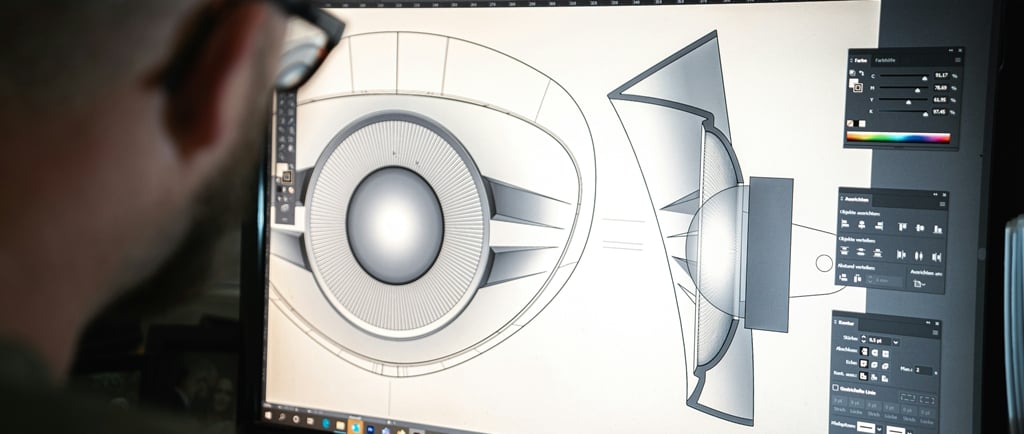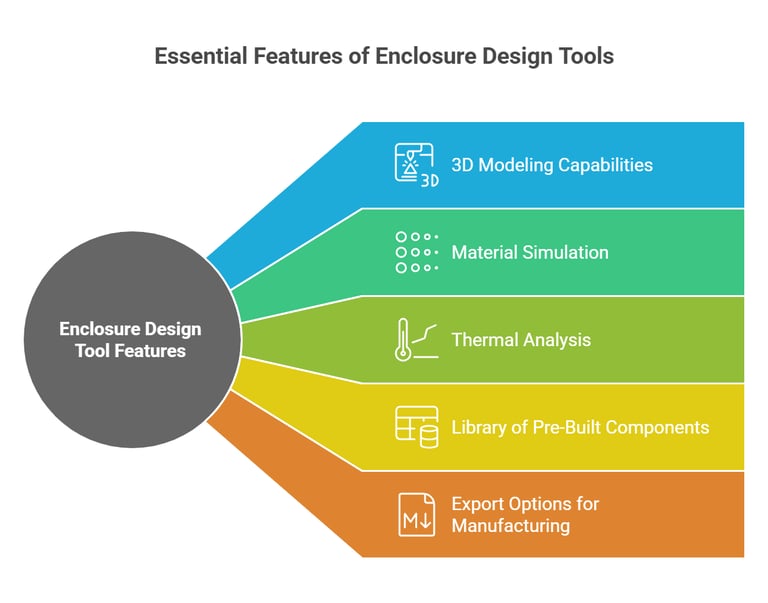Top Tools and Software for Designing Electronic Enclosures Like a Pro
Designing electronic enclosures requires precision, efficiency, and an understanding of how different materials and components interact. Whether you're a seasoned engineer or a startup developing a new product, using the right tools and software can significantly streamline the process, reduce design errors, and improve the final product's quality.
2/10/20253 min read


Designing electronic enclosures requires precision, efficiency, and an understanding of how different materials and components interact. Whether you're a seasoned engineer or a startup developing a new product, using the right tools and software can significantly streamline the process, reduce design errors, and improve the final product's quality. In this article, we'll explore the best tools and software for professional electronic enclosure design, highlighting their key features, benefits, and ideal use cases.
Why Use Specialized Tools and Software for Enclosure Design?
1. Precision and Accuracy
A well-designed enclosure must have exact dimensions, tolerances, and component placements to ensure seamless assembly. CAD and simulation software help designers create precise models, minimizing manufacturing errors and the need for rework.
2. Time Efficiency
Modern design tools offer pre-built templates, libraries, and automation features that speed up the design process. Instead of starting from scratch, designers can leverage existing components and adjust them to meet specific project needs.
3. Improved Collaboration
Enclosure design involves input from multiple stakeholders, including engineers, product designers, and manufacturers. Many tools support real-time collaboration and cloud-based file sharing, making it easier to align everyone on the same page.
4. Cost Savings
By using virtual simulation and prototyping, companies can reduce the need for physical prototypes, lowering material and labor costs. Software with thermal analysis and stress testing features allows designers to identify potential failures before production.
Key Features to Look for in Enclosure Design Tools
1. 3D Modeling Capabilities
The ability to create detailed 3D models ensures that every component fits together perfectly. Advanced modeling tools allow designers to visualize the enclosure from multiple angles.
2. Material Simulation
Different materials behave differently under stress, heat, and external forces. A good design tool should allow designers to simulate various materials, such as plastic, aluminum, or composites, under real-world conditions.
3. Thermal Analysis
For electronic enclosures, heat dissipation and airflow management are critical. Thermal simulation tools help predict how heat will flow through the enclosure, preventing overheating issues.
4. Library of Pre-Built Components
Having access to a database of standard components like screws, connectors, or mounting brackets saves time and ensures compatibility with off-the-shelf parts.
5. Export Options for Manufacturing
Seamless integration with manufacturing tools is crucial. The best software should support common file formats like STL, STEP, and DXF for CNC machining, 3D printing, or injection molding.
Top Tools and Software for Enclosure Design
A. CAD (Computer-Aided Design) Software
1. SolidWorks
Features: Advanced 3D modeling, robust simulation tools, and a vast library of components.
Ideal For: Professional designers working on complex or custom enclosures.
2. AutoCAD
Features: Precise 2D drafting and basic 3D modeling.
Ideal For: Designers who prefer detailed 2D layouts or simpler projects.
3. Fusion 360 (Autodesk)
Features: Cloud-based platform with integrated CAD/CAM/CAE tools.
Ideal For: Small teams or startups looking for an affordable all-in-one solution.
4. Creo (PTC)
Features: Parametric modeling, advanced simulation tools, and IoT integration.
Ideal For: High-end industrial or aerospace projects requiring precision engineering.
B. Thermal Simulation Tools
1. ANSYS Electronics Desktop
Features: Advanced thermal analysis for modeling heat dissipation.
Ideal For: High-powered devices where thermal management is critical.
2. COMSOL Multiphysics
Features: Multiphysics simulations combining thermal, structural, and electromagnetic analysis.
Ideal For: Complex designs requiring multi-environment testing.
C. PCB Design Integration Tools
1. Altium Designer
Features: Seamless integration between PCB layout and enclosure design.
Ideal For: Projects where PCB fitment is critical.
2. EAGLE (Autodesk)
Features: PCB layout tools that integrate with Fusion 360.
Ideal For: Small-scale projects needing PCB-enclosure alignment.
D. Prototyping Tools
1. TinkerCAD (Autodesk)
Features: Beginner-friendly online tool for quick prototyping.
Ideal For: Hobbyists or early-stage concept designs.
2. Onshape
Features: Cloud-based CAD tool with real-time collaboration features.
Ideal For: Teams working remotely.
E. CAM (Computer-Aided Manufacturing) Tools
1. Mastercam
Features: Converts CAD models into CNC machining instructions.
Ideal For: Designers creating metal or plastic enclosures via CNC machining.
2. RhinoCAM
Features: Integrated CAM solution for Rhino users.
Ideal For: Custom designs requiring intricate detailing.
Tips for Choosing the Right Tool or Software
1. Define Your Project Needs
Consider the complexity of your design, materials, and manufacturing process.
2. Consider Your Team’s Skill Level
Beginners may benefit from tools like TinkerCAD or Fusion 360, while professionals may prefer SolidWorks or Creo.
3. Budget Constraints
Free or low-cost options like EAGLE and TinkerCAD for smaller projects.
Premium software like SolidWorks or ANSYS for high-end applications.
4. Compatibility with Manufacturers’ Requirements
Ensure software can export files in manufacturer-supported formats.
How These Tools Support Collaboration with Manufacturers
1. Streamlined Communication
Share detailed 3D models or technical drawings directly with manufacturers.
2. Virtual Testing Before Prototyping
Use simulation tools to test performance before production.
3. Faster Iterations
Quickly update designs based on feedback.
Why Partnering with a Manufacturer Still Matters
1. Expertise in Material Selection and Manufacturing Techniques
Manufacturers like Peakingtech can guide material selection and processes.
2. Precision Execution of Your Designs
Working with experienced manufacturers ensures accurate execution of designs.
Conclusion
Using professional tools for enclosure design enhances precision, efficiency, and collaboration. Combining these tools with expert manufacturing partners ensures high-quality results.
Call-to-Action (CTA)
Contact Peakingtech to turn your enclosure designs into reality using advanced manufacturing techniques. Share your favorite design tools or ask questions in the comments!


